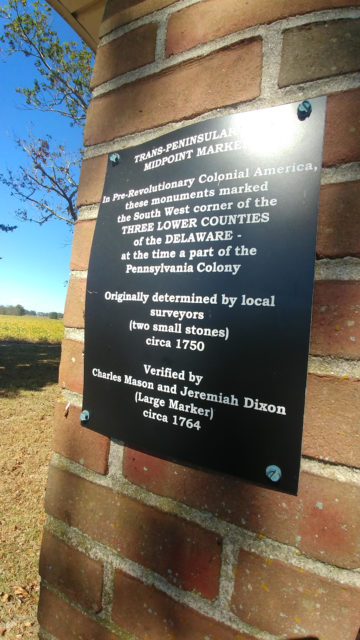One facet of the early TEA Party which fascinated me was the debate on whether to try to form a political TEA Party or work through the existing two-party system, or, as I call it, the duopoly. In Rise and Fall I devoted a significant part of the early chapters to the TEA Party’s impact on two political campaigns: the 2009 Doug Hoffman Congressional race in New York’s 23rd Congressional District and the Scott Brown Senate race for the “Kennedy seat” in Massachusetts in 2009-10.
In the Hoffman case, you may recall that the Republican nominee was selected by local party officials rather than the electorate at large, resulting in a candidate, state Assembly member Dede Scozzafava, who was deemed most electable as a moderate as opposed to necessarily espousing Republican principles. Hoffman, who had also interviewed for the seat and had originally pledged his support for Scozzafava, eventually prevailed upon New York’s Conservative Party to give him his own ballot line.
Although Hoffman was in a close second place by the time late October rolled around – thanks to the sudden interest of the TEA Party in a rather obscure, backwater Congressional district special election race – the eventual withdrawal by the Republican and her endorsement of Democrat Bill Owens, along with a disadvantageous ballot position, pulled defeat from the jaws of victory. (Owens had the advantage of two ballot lines as well, as a far-left party endorsed him rather than run a candidate on their own.)
Stung by that loss, the TEA Party tried things the other way. Fast-forward about six weeks and once Scott Brown made it official by winning the Republican nomination for the Massachusetts special election it was (practically) all hands on deck – never mind he was arguably to the left of Scozzafava overall and there was an independent libertarian candidate in the race (ironically by the name of Joseph Kennedy, but no relation to the Camelot clan) who may have been more suitable philosophically. Aside from the small percentage who argued the Kennedy case on TEA Party principles, the national focus was on Brown winning, and as we now know, he did – and was soon rather disappointing for two reasons: one, his moderate stances, and secondly, he’s the one who gave us Elizabeth Warren because he got his doors blown off in the 2012 general, when his wasn’t the only race of national concern.
In short, this brief few months sealed a key decision (and perhaps error) by those who were the leaders of the TEA Party: they chose to try and reform the Republican Party from within. Convinced that someplace within the GOP were candidates and officeholders receptive to the conservative message of the TEA Party, the effort in the first half of last decade was to take over the GOP from within, through gaining seats in local precincts and working their way up the ranks. By now you would think this policy of percolating through from the grassroots would be bearing sizable fruit – but it doesn’t seem to be working that way.
This long prelude has finally brought me to my main point and inspiration. One of those who I made acquaintance with in promoting my book over the summer was Andy Hooser, whose radio show “The Voice of Reason” was the seventh stop on my radio tour. (I remember doing his show pacing around my backyard on what I called “Triple Dip Friday” – three shows in one day!)
Since then I’ve signed up for updates and the other day Andy introduced the current two-party system as a topic of discussion, noting in part:
We have been the ones, as members of the parties, that have allowed the parties to get out of hand. Our nation was built on strong, hard individuals who were leaders, not followers. The founding fathers that did promote a two party system, did so with the idea that the informed, active member of society could listen to an argument, contribute to the cause, and help the party accomplish it’s goals. Now…the party creates fear in the hearts of ill-informed followers to create an agenda. With our lack of involvement in politics…with our lack of engagement in the system…and our lack of understanding of issues as a society, the parties are no longer run by us…but for for self preservation with us as the follower to keep the lifeline going.
So how do we fix this? A third party? HA. Third parties are no more relevant than Vermin Supreme running for President. The only thing third parties do, is potentially swing an election to the side lest in line with your views.
Our job is to fix the parties from within. We cannot destroy them (unless they destroy themselves…Hello socialist Democrats?), we cannot leave them. At the end of the day, the money, they power, and the influence is within the parties. Our chance to change things…is the fix the party internally. Run for office locally. Set a standard of what you will tolerate as a platform for the party and the candidates. Hold you local, statewide, and national elected officials accountable. Don’t let them say one thing, yet vote another way. Work within your party. And bring it back to the platform it says it promotes. That’s the reason you joined it in the first place.
“To be a two party system…or not to be!” – Voice of Reason website, January 29, 2020.
A common definition of insanity is doing the same thing over and over again, and it seems to me we in the TEA Party tried this approach a decade ago. Nor would it surprise me if the Moral Majority crowd didn’t try it in the early 1980s, to name another somewhat failed attempt to mold and shape politics to their will. Everything old is new again.
This assertion also begs the question: are the two parties really that popular? Since I was a Maryland resident at the time, this is where the party registration totals stood the day after the initial set of TEA Parties, February 28, 2009:
- Democrat: 1,953,650 (56.9%)
- Republican: 919,500 (26.8%)
- unaffiliated: 482,806 (14.1%)
- all others: 76,486 (2.2%)
It was a D+30 state. Now let’s see where we are at as of the end of 2019:
- Democrat: 2,204,017 (54.7%)
- Republican: 1,009,635 (25.0%)
- unaffiliated: 757,953 (18.8%)
- all others: 60,536 (1.5%)
Of the four major groups, the only one which is growing in rate are the unaffiliated. But it is still a D+30 state.
Turning to my adopted home state of Delaware, the online numbers only go back to 2010. In Delaware at that time (January 2010) there were 25 (!) registered parties but only four had ballot access: Democrats, Republicans, Libertarians, and the Independent Party of Delaware (or IPOD).
- Democrat: 287,821 (47.1%)
- Republican: 180,479 (29.5%)
- unaffiliated: 137,072 (22.4%)
- all others: 6,095 (1.0%)
That would make it a D+18 state, which was a little more promising for conservatives. So where do we stand now, a decade later? Well, we are down to 17 parties listed but the top dogs are still on top:
- Democrat: 338,586 (47.4%)
- Republican: 198,018 (27.7%)
- unaffiliated: 163,150 (22.8%)
- all others: 14,365 (2.0%)
The Delaware GOP has seen their previous support splinter in every direction: their 1.8% loss has gone slightly to the Democrats (0.4%) and unaffiliated groups (also 0.4%) but mainly to minor parties, which doubled to 2% of the electorate. Now it’s a D+20 state.
What does this all mean? Well, at least in this small area of the country, it means that if the TEA Party took over the Republican Party, it didn’t do a very good job of making it thrive. (Given the Delaware GOP’s treatment of their Senate primary winner Christine O’Donnell in 2010, it wouldn’t surprise me if a significant part of their registration loss came from that incident.) Of course, there are other areas of the nation where the GOP is probably growing but I suspect these types of declining numbers are prevalent in many areas.
So why not a third party? Well, if you look at our history as a whole our political system went through a number of party upheavals in its first century, but the last major shift came in the 1850s as the Republican Party ascended over the ruins of the old Whig Party. I tend to believe that as time went on the two dominant parties entered into a gentleman’s agreement to divvy the political spoils among themselves, making it more difficult for competing parties to grow and prosper.
Imagine the time and effort wasted by the Libertarians, Green Party, Constitution Party, Reform Party, and others in having to gain ballot access again and again in some states, such as Maryland – a state that required parties secure 1% of the vote in certain races or go through a process of collecting thousands of signatures just to qualify for another cycle. Of course, the Republicans and Democrats don’t have to do this, and they are the ones who prefer the duopoly because it cuts off competition.
On the other hand, the reason Delaware has so many parties is fairly lax rules on party formation. Their biggest hurdle is getting and maintaining 1% of registered voters for ballot access, but it’s been done by the Libertarians, Green Party, and IPOD, so there are possibly five choices all across the political spectrum. (They are very close to six, if the American Delta Party can pick up a handful of voters.) Granted, none of these parties fill a ballot all the way down to state representative, but I believe the reason is a self-fulfilling prophecy (created by the duopoly, echoed by the media) that only a D or R can win.
Over the years, there has become a “lesser of two evils” approach to voting: people voted for Donald Trump not because they were enamored with him but because they were really afraid of what Hillary Clinton would do to us. We were all told that “a vote for Gary Johnson, Evan McMullin, etc. is a vote for Hillary.” So they were scared into voting for Trump. (On the other hand, having disgruntled Bernie Sanders backers and conventional wisdom that Hillary would easily win may have freed those on the Left to vote for who they really wanted, to Hillary’s detriment.)
That was the approach by enough people in enough states (including her so-called “firewall” across the Midwest) to give Donald Trump the upset victory despite the fact more Republicans voted against him than in his favor during the primary season, although Trump had the plurality by the time it was over. (As Democrats did against Barack Obama in 2008 – Hillary Clinton won that popular vote, too.)
But what if people had something to vote for? If you’re on the far left, maybe you like the Green Party or Socialist Workers Party, while those on the conservative side may prefer my political home, the Constitution Party. There’s nothing hurt by giving the electorate more choices, but the key is getting states to loosen up balloting requirements.
And if we want a real TEA Party, it would become possible and easier to build one from the bottom up. Why take over a party which is set in its ways when you can build to suit? Let’s make that easier to do.




